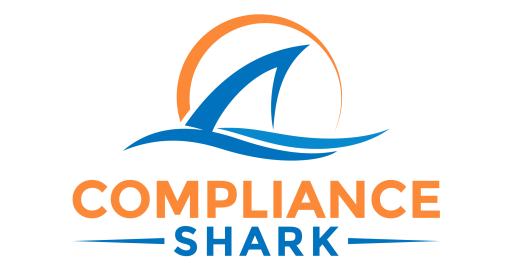Emerging Technologies in the Healthcare Laundry Industry
Hi there, it’s Greg checking in again!
If there’s one thing I’ve learned in my years working in healthcare laundry, it’s this: facilities that embrace innovation save money, improve safety, and stay ahead of compliance challenges.
As you know, healthcare is no small endeavor. Hospitals and healthcare facilities are constantly battling rising costs, labor shortages, and the ever-present risk of healthcare-associated infections (HAIs).
But I’ve got good news. New technologies are reshaping the way healthcare laundry is managed, making it more efficient, cost-effective, and safer than ever before.
By integrating the right technologies in your facility, you can:
Lower linen replacement costs
Increase patient and staff safety
Reduce labor inefficiencies
Improve compliance with infection prevention standards
That’s why I dedicated an entire chapter of my book to emerging technologies that are redefining healthcare laundry. And, if you want an early sneakpeek, for those of you who have been following along, you know what to do. For the new ones, welcome. Just hit reply to this email with “Book,” and I’ll put your name on the list.
Separately, this is a topic I’m hugely interested in, so much so, that I have a panel talk with AHE on how next-gen antimicrobial tech is revolutionizing our space later this year alongside some industry veterans, like Keri Lestage, PhD, PMP, of Kismet Technologies and Mike Parker, CMIP, T-CHEST, T-CNACC, T-CSCT, Director, Environmental & Corporate Linen Services, Orlando Health.
Now, onto the topic of innovation.
Embracing Innovation Can Keep Your Hospital Ahead of the Game
In the opening of my book, we learn of a top-rated hospital facing a massive catastrophe. Now, I won’t get into the weeds of it here, but despite this facility’s stellar reputation, it began struggling with severe linen shortages and quality issues. Nurses were overwhelmed searching for linens and even cutting corners to make ends meet. Patients started noticing a decline in the quality of their bed sheets and gowns, and they began doubting the capability of the hospital. Behind the scenes, infection rates were surging along with the hospital’s costs, and the facility’s reputation and operations were all on the line.
The administration decided it must take action. Fast forward to some major changes in place – including implementing new technology to optimize its linen program – and the hospital was able to meet its sustainability goals, reduce its environmental impact, and improve the quality of care.
But, it’s important to note, this transformation didn’t happen by chance — it was driven by strategic investments in technology. Specifically, the hospital reduced linen losses with RFID tracking, lowered energy costs with efficient washers and dryers, and improved infection prevention through smarter linen handling.
Today, these same innovations are now shaping the future of healthcare laundry on a much larger scale.
So how can this emerging technology help you? Let’s take a look at some of the biggest innovations shaping the future of this industry.
The Game-Changing Technologies You Need to Know About
RFID Tracking for Linens: Facilities lose thousands (sometimes millions) each year in misplaced or discarded linens.
RFID technology changes the game by allowing real-time tracking of linens, reducing waste, and ensuring compliance with hygiene standards. In one case study, a hospital saved US$300,000 a year after implementing RFID systems. In another, RFID technology helped a hospital reduce laundering by 15% and reduce the need for ordering new products by 50%.
Antimicrobial Linens: Standard textiles can harbor bacteria between laundering cycles, increasing the risk of infection. Antimicrobial-treated linens actively resist bacterial growth, adding an extra layer of protection for patients and staff. A study published in the Journal of Hospital Infection found that 94% of one type of antimicrobial fabric had less than 20 bacteria per 100 cm² after seven days of hospital use – meeting strict hospital hygiene standards.
Automated Sorting and Folding Robots: In my many years of study, I’ve come to the following conclusion: approximately 80% of manual laundry labor revolves around humans performing three tasks: picking up a piece of linen, visually inspecting it, and, based on that analysis, performing an action like folding, stacking, or loading. I call this the “grab, analyze, put” sequence. The good news is that robotic systems are starting to emerge that can automate this process. This technology is in its early stages, meaning it will only get better as time passes.
Whole-Genome Sequencing (WGS): Infection prevention isn’t just about keeping linens clean – it’s about tracking and eliminating pathogens before they spread.
WGS technology allows hospitals to identify and track outbreaks in real-time, offering insights that help facilities prevent healthcare-associated infections (HAIs). According to the World Health Organization (WHO), up to 70% of HAIs are preventable with better infection control measures.
Final Thoughts
The future of healthcare laundry is here. The question is – are you ready to evolve with it? I’ve been in this industry long enough to know that facilities that adapt early are the ones that thrive.
As technology advances and compliance standards become stricter, those who invest now will reap the benefits in efficiency, cost reduction, and patient safety.
In my book, I break down how to strategically implement these technologies so that your facility can benefit from them without blowing the budget. But, as always, you can just hit me up – I love meeting people in the industry and learning about what you’re working on.
Until next time,
Greg
Compliance Shark



